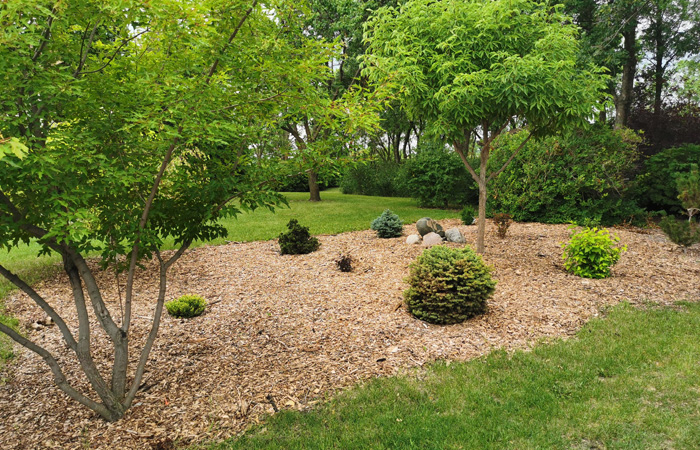I recently added a fresh layer of wood-chip mulch to the shrub beds in my yard. Honestly, I don’t mind weeding but the mulch really does help keep things from getting out of hand.
But is that all that mulch is good for? Suppressing weeds until the wood-chips rot and need replacing?
As it turns out there are dozens of advantages to using mulch in your yard and flowerbeds. Here are just a few.
First of all, yes, all kinds of mulches help to reduce weed growth. It keeps the most aggressive and competitive weed known to man at bay: grass. If your lawn grows up to surround the trunks of young trees or shrubs it will stunt their growth almost completely! The problem is that grass has its feeding roots in the top 12 inches of soil the same as most plants. But a healthy lawn is so aggressive that it will use up most of the water and nutrients. Grass will even choke out the dandelions and thistles when it’s healthy. I have observed a cottonwood tree that was grown in grass. These trees can grow over 4 feet in a year with the right conditions. But with the grass stealing so much of its water and nutrients it grew only 1 foot in 10 years!
Mulch is helpful in the winter, adding one more layer of insulation over plant roots. A hard winter with thin snow cover can do all kinds of freezing damage to plant roots, and we occasionally do not get significant snowfall until late December.
An advantage of organic mulching is that it will rot. This sounds like a problem at first but can be a huge advantage when you think about it. Once your mulch has done its time it becomes a natural compost for your plants. Just leave the wood chips to rot undisturbed, and it will encourage the growth of beneficial mycorrhizal fungi that connect with your tree roots. If the mulch layer starts to get thin, just add another shovelful or two on top.
Keep in mind that some mulches work for specific purposes. Straw mulch works very nicely in the garden for 1 year and can be tilled into the soil in fall. A fresh green mulch of shredded leaves or grass clippings has very high nitrogen content, and a thin 1/2″ layer is great for spreading on lawns or veggie gardens. In comparison the shredded wood-chips from large tree trunks have a very high carbon content. This can serve the purpose well but won’t stimulate much green growth in the end as it decays. The best option for mulching trees is young branches up to 2″ thick. This has more balanced levels of nitrogen with carbon making for excellent compost and contain enzymes that are needed for healthy woody plants.
All kinds of mulches are helpful for retaining moisture by reducing evaporation. This will reduce how often you need to water and can protect your plants from dehydration in a drought.
There are various colours of mulch as well. The shrub beds in my yard are covered in a natural branch mulch. In front of my house the beds are covered in black mulch maintaining the black dirt look. There are many colour options. Natural gold, red, chocolate brown you name it. Do keep in mind though that some coloured chips are treated woods that will not break down as well as natural ones.
Who knew a little mulch could make such a big difference.




